The adorable loyal pet of the Royal Family of the Inhumans, Lockjaw’s ability in Marvel Snap is one of the most appropriate in the game. Of course, it’s the most fun when you can create and try the best Lockjaw decks in the game.
Lockjaw’s effect is unique, and building a deck around it can be quite powerful if you’re lucky. In Marvel Comics, Lockjaw is able to make portals to help the Inhumans travel around the galaxy. He does something very similar in the card battle game, and it’s quite a fun and random card to use because of it.
Lockjaw card abilities in Marvel Snap, explained
Lockjaw is a three-cost card with two Power. Its effect is “When you play a card here, swap it with a card in your deck (once per turn).” It is available in series three, accessible from collection level 486 or above.
The cards played in the location where Lockjaw is are revealed, and any On Reveal effect it has will be activated. Only then will the card be returned to the deck, and a new card will be brought out, revealing itself and activating other possible On Reveal effects.
General strategy for Lockjaw in Marvel Snap
The best Lockjaw decks will usually have Lockjaw paired with a large number of high-cost cards and a way to play three more units in the Lockjaw location so that its effect can bring the big guys to the board before final turns. This requires low-cost cards that can be played in the turns following Lockjaw’s play.
The use of Lockjaw tends to be unpredictable, but it almost always seeks to guarantee the location it is in. This means that it is necessary to have victory conditions for at least a second location. This can happen on early turns before Lockjaw arrives and on late turns after you’ve used up as much of Lockjaw’s effect as possible.
Best combos with Lockjaw in Marvel Snap
Cards that have the best synergy with Lockjaw include:
- Thanos
- Sunspot
- Thor
- Jane Foster
- Jubilee
Thanos is one of the best cards to use with Lockjaw. The Infinity Stones are low-cost cards and most have On Reveal effects. This means that playing one of them on Lockjaw will not only activate its powerful effect, but it will also summon another card onto the board.
Sunspot might be the low-cost card option to play in Lockjaw’s location. This way, at least Sunspot has a chance to accumulate more power if you whiff, which is much better than when Lockjaw summons Wasp.
Thor and Jane Foster combine for some great power, since Jane pulls Mjolnir from your deck every single time. You can play it for free into Lockjaw’s lane and give Thor a bunch of power while strengthening the lane again with whatever else it pulls.
Playing Jubilee into Lockjaw’s lane will effectively give you another chance at playing Jubilee elsewhere to continue trying to pull your big cards from your deck at multiple locations.
Now, let’s take a look at the best Lockjaw decks in Marvel Snap.
The best Lockjaw decks in Marvel Snap
Thanos Lockjaw
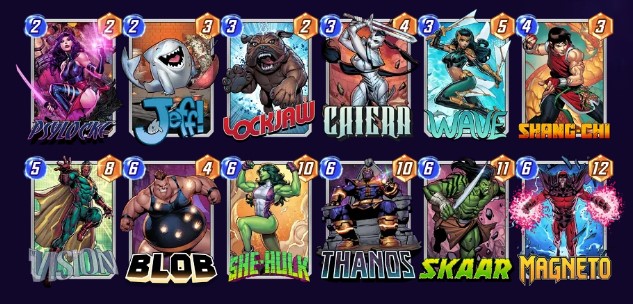
As mentioned, Lockjaw’s synergy with the Infinity Stones given by Thanos to its user’s deck is one of the best offensive engines the game has ever seen. Even if Lockjaw has already been nerfed by limiting its card-switching effect to just once per turn, its ability to possibly call a free high-powered unit without the need to spend its corresponding energy cost is a top-notch strategy when it comes to creating a lot of Power on your locations.
Five of the six Infinity Stones have a stat line of one-cost, one-Power (the Power Stone has three-Power). All of them have certain effects that give different advantages to your side, such as gaining bonus energy, changing locations, drawing cards, and more. The stones are the best targets for Lockjaw’s ability, making them the bait to possibly call a high-cost unit from your deck with ease.
Some of the high-cost cards in this deck that you can call through Lockjaw’s effect are Vision (for movement), Blob (for the highest possible Power output by merging itself with your cards in the deck), She-Hulk and Skaar (for Power and potential cost-reducing effect), and Magneto (for potentially disrupting your opponent’s setups by pulling their three and four-cost cards).
Wave and Psylocke are there for possibly letting you play high-cost cards as early as possible, while Jeff the Baby Land Shark is literally unstoppable when it comes to playing or moving it to locations. Cap off the deck with Caiera, which prevents your one-cost and six-cost cards from being destroyed, and Shang-Chi, which can destroy your opponent’s cards with ten or more Power in the same location where you play it.
Win condition cards for this deck
You can consider snapping if the majority of these cards appear in your hand:
- Blob
- She-Hulk
- Skaar
- Magneto
- Shang-Chi
- Jeff the Baby Land Shark
Once Blob appears in your hand, it’s almost a win most of the time in a single location because of its massive Power potential. Just make sure to build up enough Power on another location since Blob can single-handedly take on a lone location with its ability.
She-Hulk and Skaar are there to potentially become cheaper in terms of their costs while maintaining their stable Power. As for Magneto, it can possibly disrupt an opponent’s setup because of its ability to move cards, making it a converted offense for your side. This is also the same case for Shang-Chi since it can destroy cards in an instant. Jeff the Baby Land Shark’s presence as an unstoppable card can make you win locations that are unplayable.
Thor Lockjaw
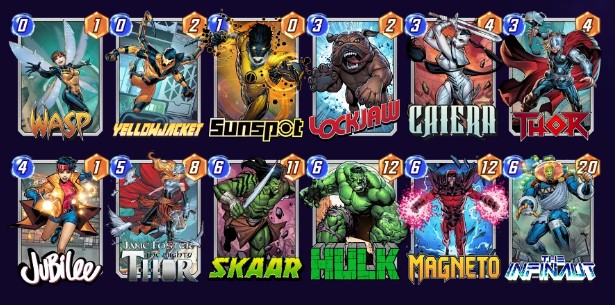
This deck has almost the same package as the first Lockjaw deck in this list. The difference is just it has no Thanos, making the cards in the deck lesser but establishing a high-risk, high-reward mantra in terms of what cards Lockjaw can call with its effect. Also, it has the Thor and Jane Foster package that serves as the stable offensive engine of this deck.
Thor is a three-cost, four-Power card that gives Mjolnir to your deck. Mjolnir, on the other hand, is a zero-cost, zero-Power card that gives Thor plus six Power when played. Mjolnir and the other zero-cost cards in this deck like Wasp and Yellowjacket are the main units you aim to play in the Lockjaw location to perform the card switch effect. This becomes more consistent with Jane Foster, which can call all zero-cost cards from your deck to your hand.
Sunspot is there to potentially build up Power in the early game since you will most likely have unspent energy in some turns. Jubilee also helps Lockjaw in the card switch effect, since it can call a unit on the Lockjaw location for free while also swapping itself with a card from your deck.
Finish the deck with Lockjaw staples like Caiera, Skaar, Magneto, and other massive Power sources like Hulk and The Infinaut.
Win condition cards for this deck
Aside from Lockjaw, the other win condition cards for this deck are:
- Thor
- Jane Foster
- Skaar
- Magneto
- Hulk
- The Infinaut
The Thor and Jan Foster combo to fetch Mjolnir from your deck provides a stable and reliable offensive engine for your side. With Lockjaw’s unpredictability when it comes to what cards it can call, Thor and Jane Foster can either be a single-location Power source or can also be distributed especially if you need to win another location.
Skaar, Magneto, Hulk, and The Infinaut, on the other hand, are your instant massive Power sources in the deck.
How to counter Lockjaw in Marvel Snap
Lockjaw needs space to get the most out of its ability, which means it’s vulnerable to cards like Debrii, Green Goblin, and Hobgoblin that can take up spaces on the opponent’s board.
The other way to prevent part of its use is by playing Cosmo in the same location, so no On Reveal effect can happen: even though it can still summon cards with a lot of Power, you can just use Shang-Chi to destroy them—preferably in the final turn of the game.
Lockjaw might not be as strong as he once was in Marvel Snap, but with the right synergy of cards, the good boy can still pull off some wins. Make sure you come back to this guide and try out each one of the best Lockjaw decks to see which one works best for you.




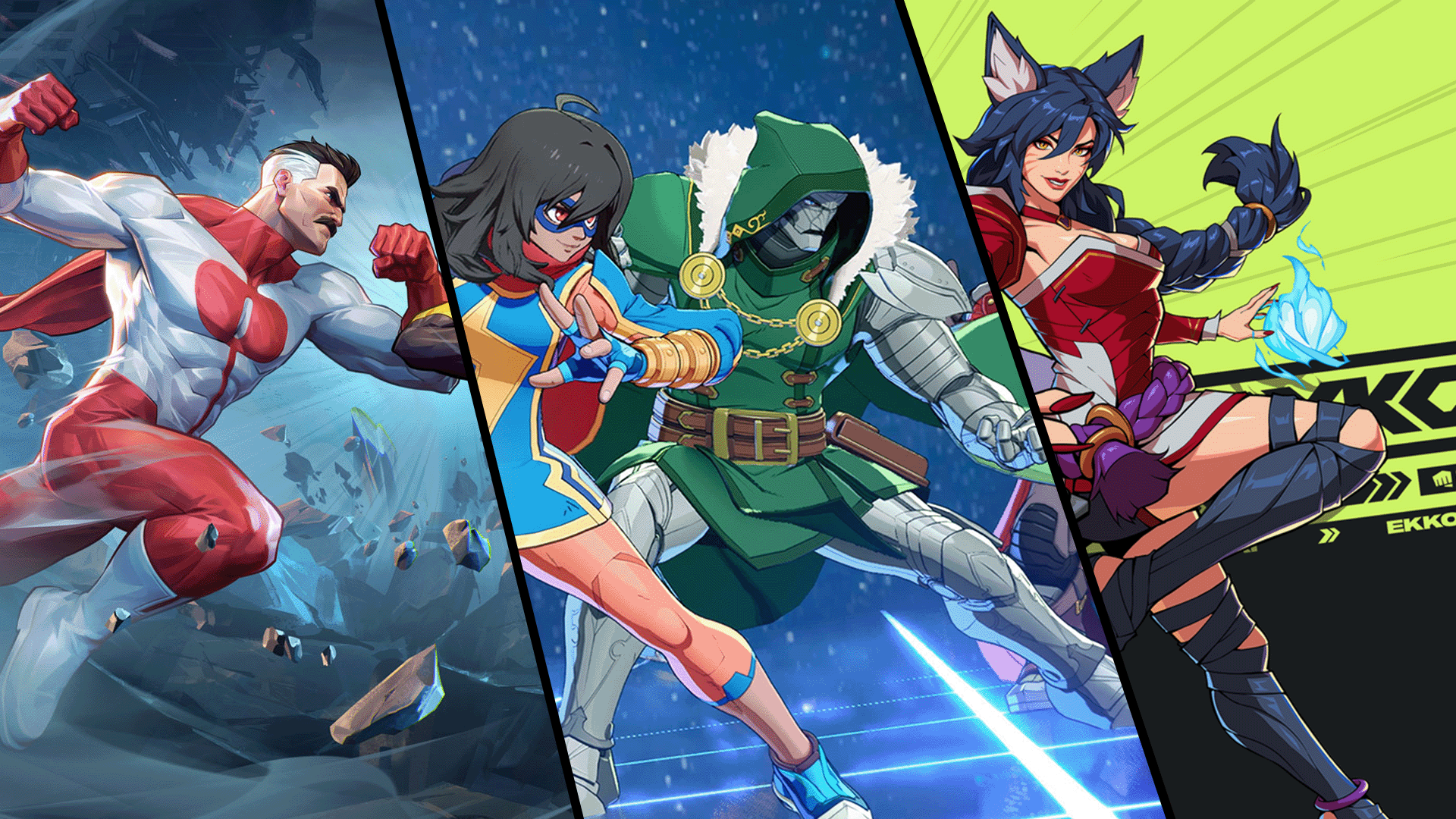
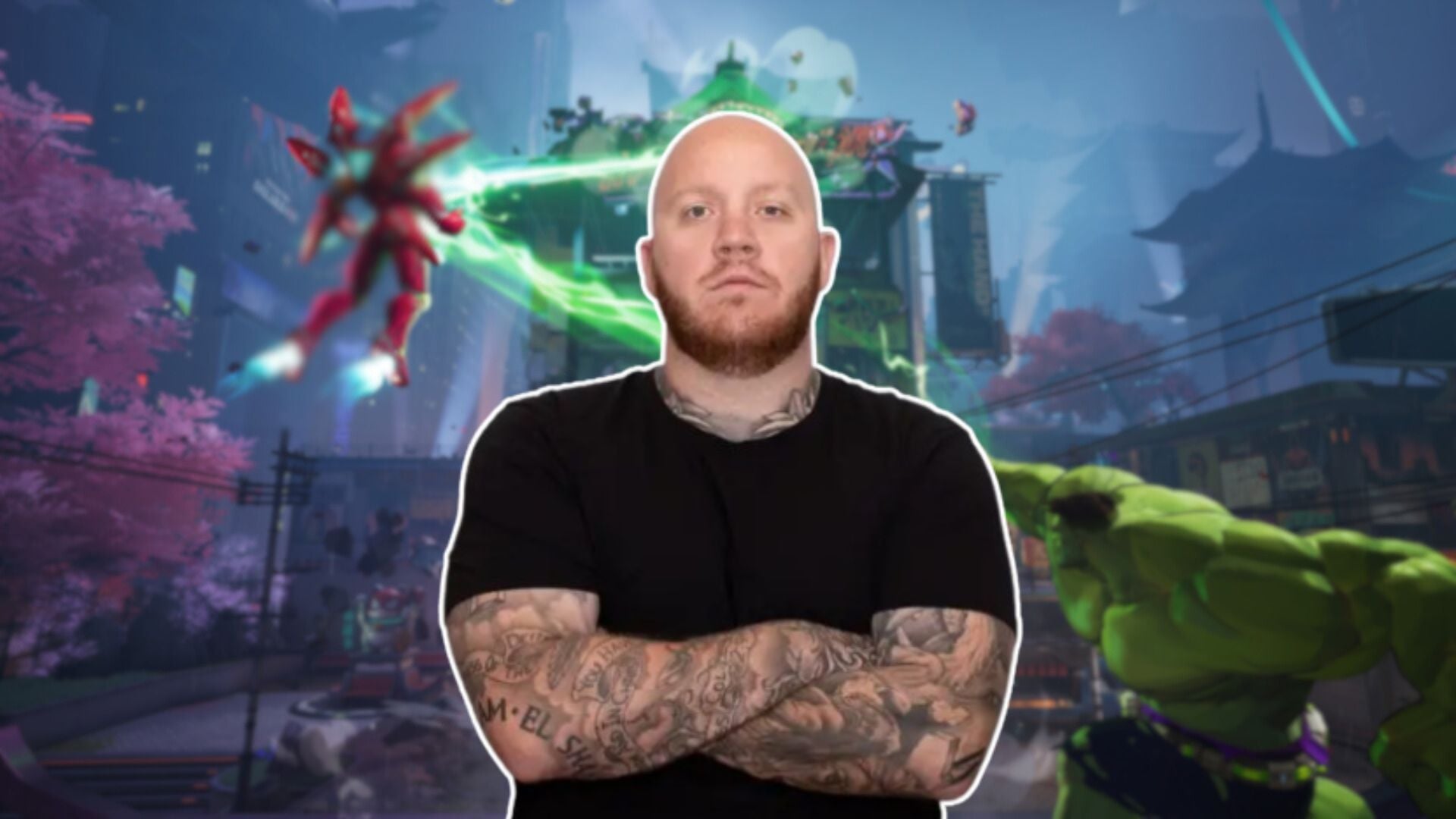
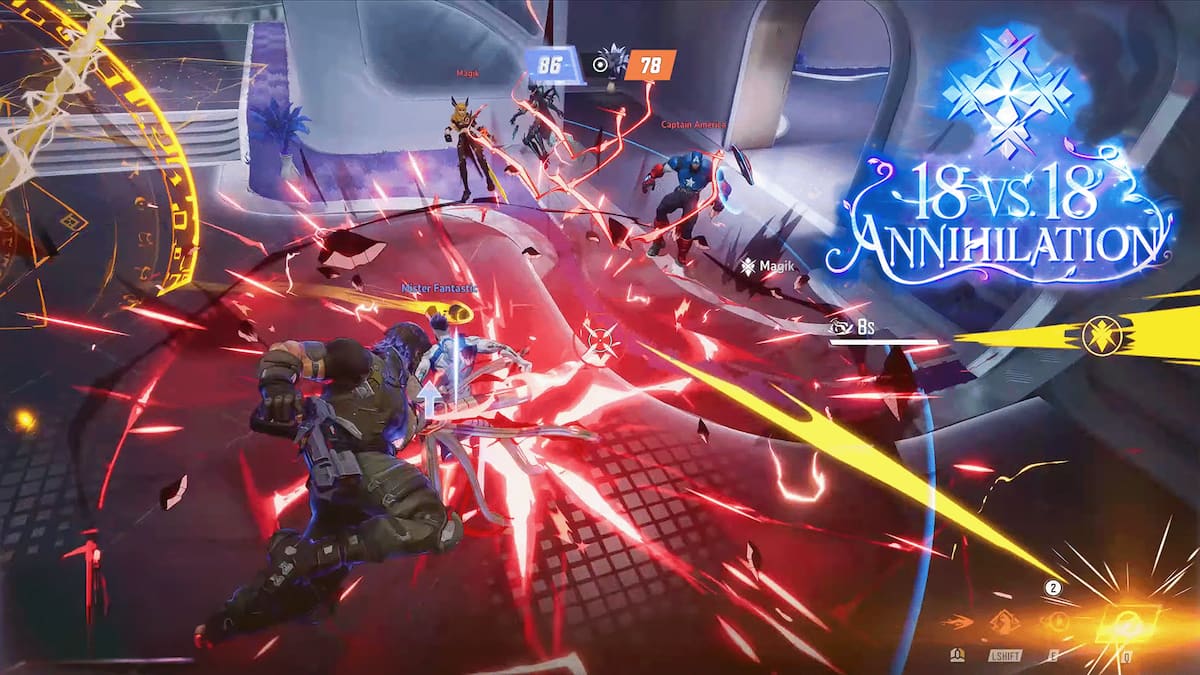
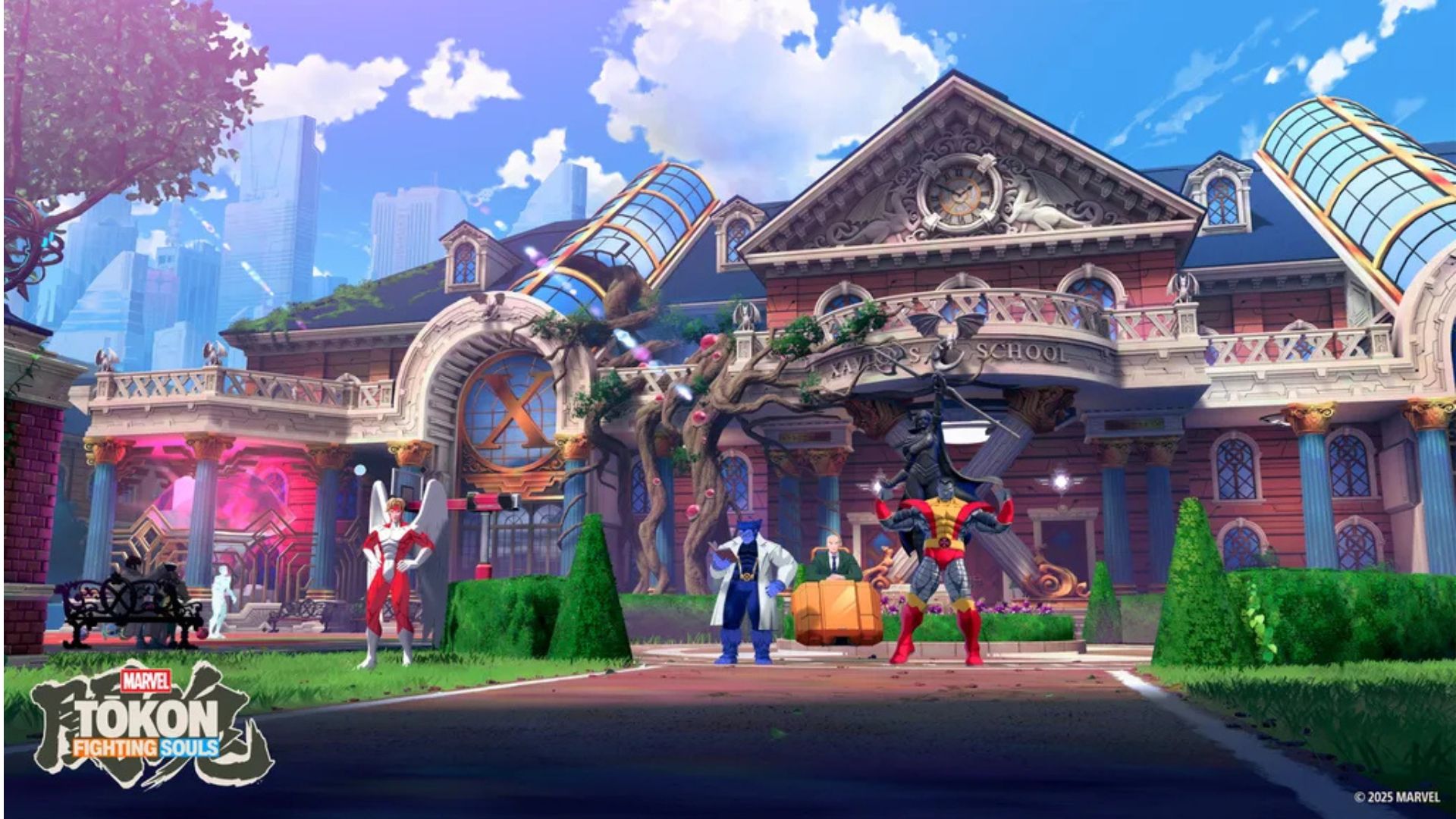

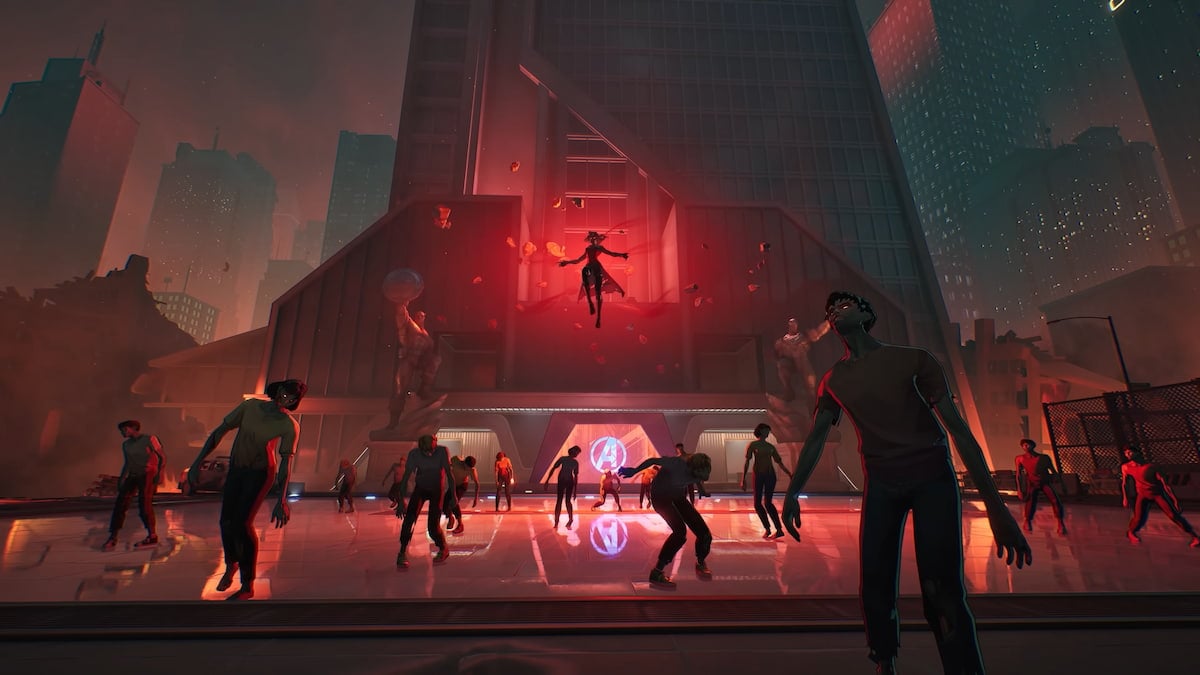
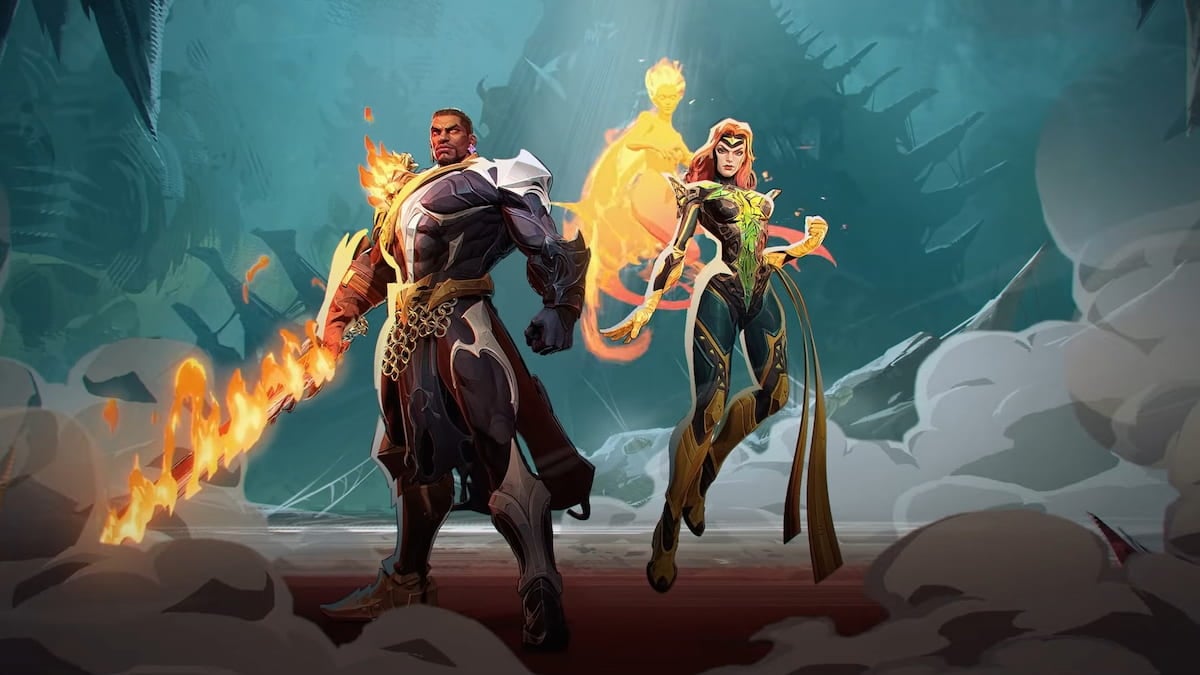
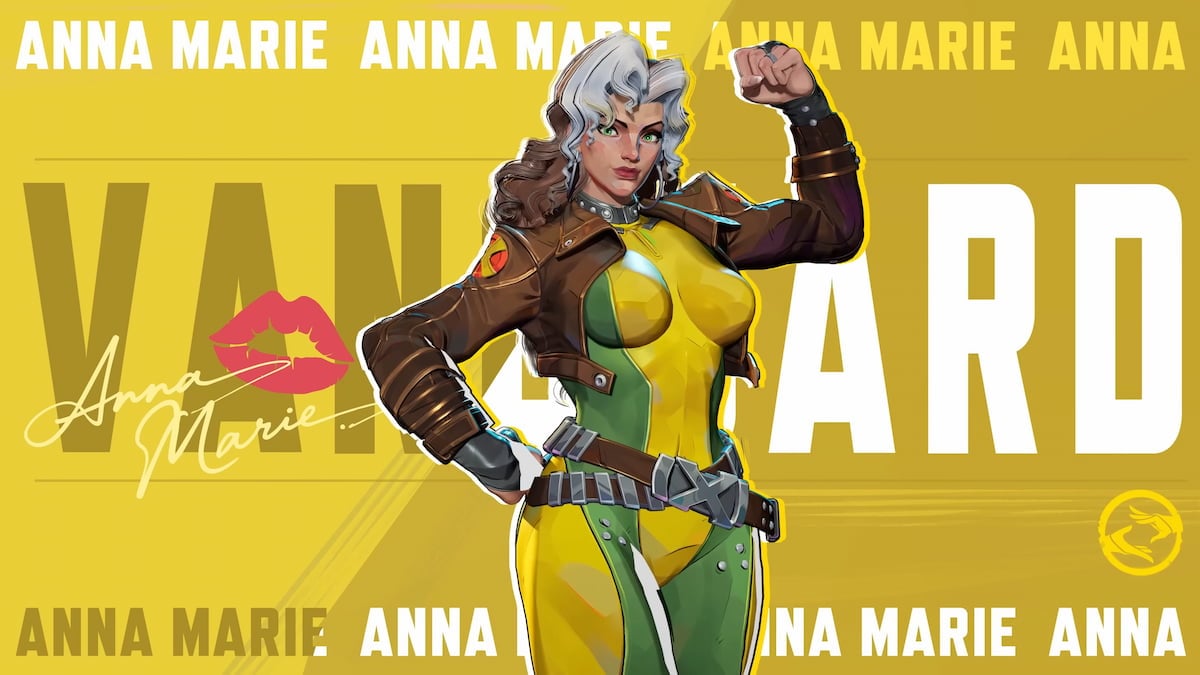
Published: Jan 16, 2024 12:44 am